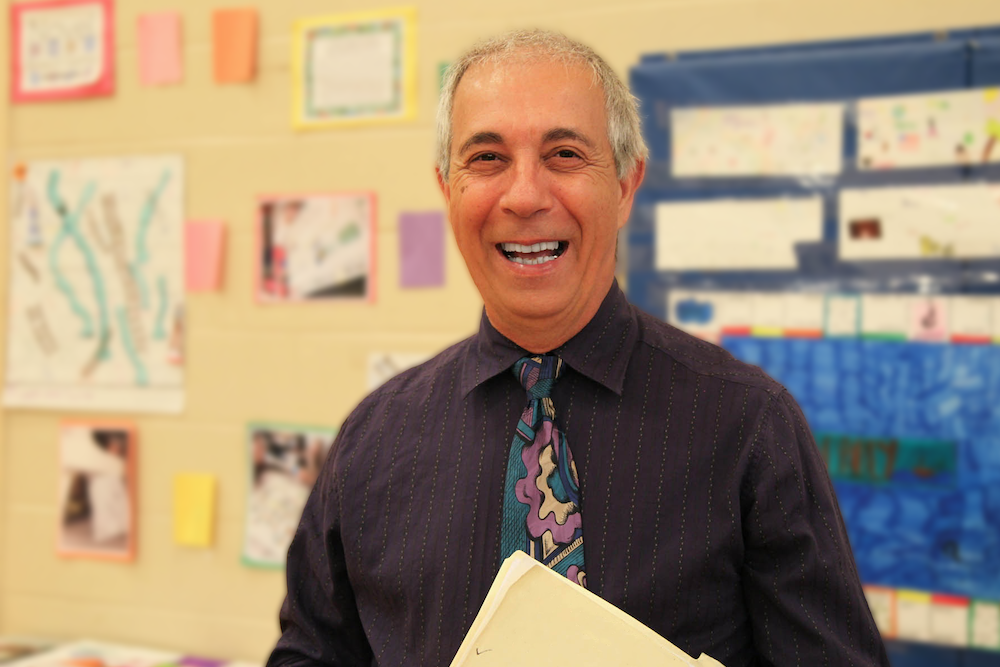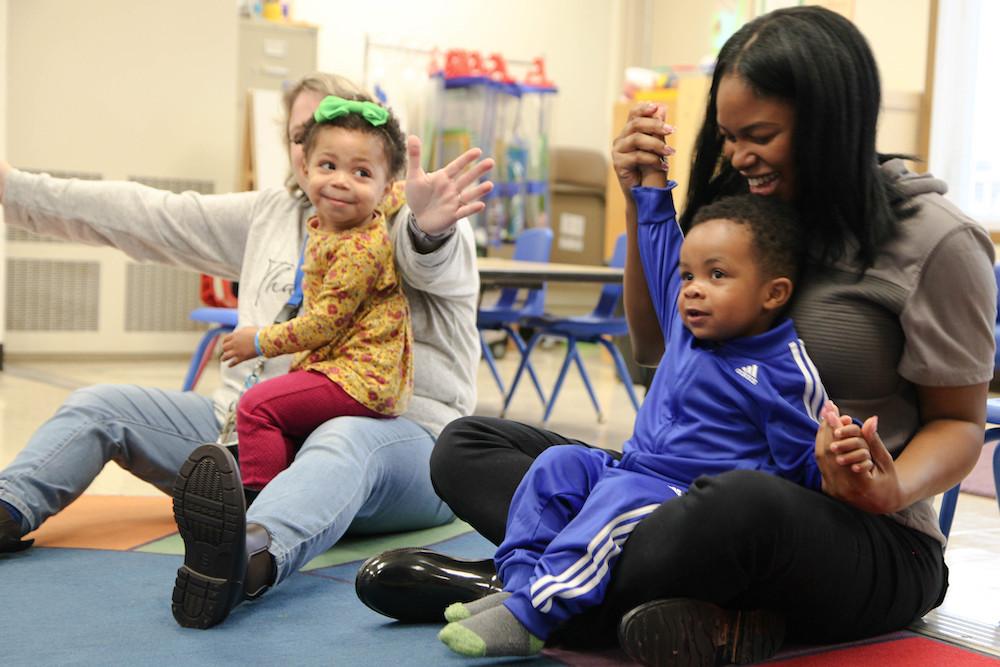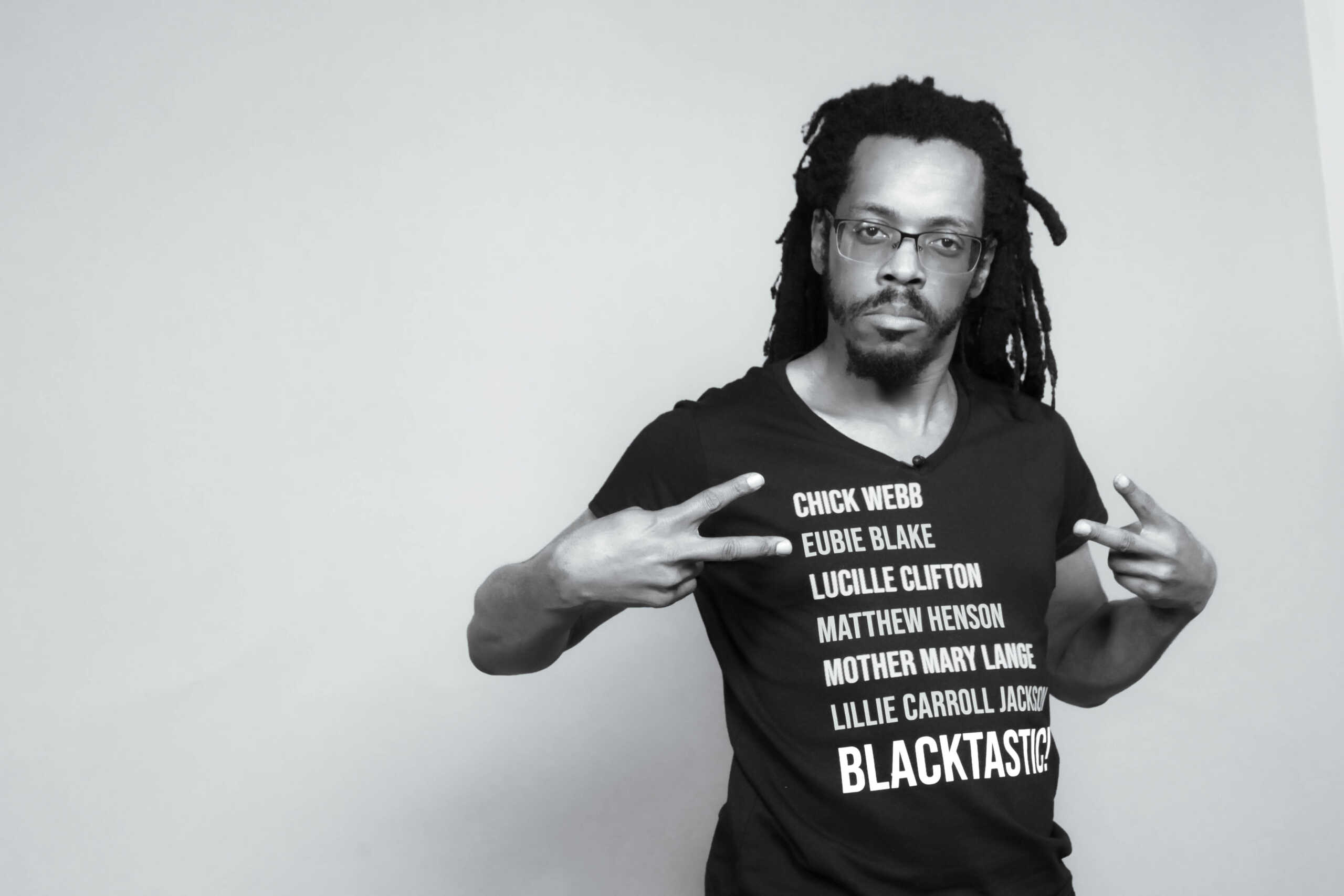Blog
Check it out: Op-ed by SALA Educator Illustrates the Impact
We’ve said it for years: the arts-integrated approach found in our Summer Arts for Learning Academy (SALA) is transformative for student learning and for teachers. But don’t take our word for it—check out this wonderful commentary in the Baltimore Banner by SALA and City Schools educator Elaina Gomez-Alcala!
In this inspiring piece, Elaina shares her experience this past summer in SALA, and explains how the free program for thousands of City Schools students has enhanced her teaching. As she puts it, “I’ve realized that this spirit of creation nurtured through arts-based learning changes what school can be for students. In the process, it also changes teaching—not just in the summer, but for year-round learning.”
Summer Fun is Fuel for Fall!
It’s not just new school supplies that students carried with them into class for the first day of school this fall! Thanks to Arts for Learning Maryland’s engaging summer programs, thousands of students across Baltimore City and DC have new inspiration from compelling arts-based summer experiences, new curiosity about what’s possible through expression, new friends, and new skills to practice. This all makes for a great new school year! But don’t just take our word for it. Studies show that student engagement in arts-rich experiences leads to not just higher academic achievement, but more active and engaged citizens! What better way to head back to school?
Summer Arts for Learning Academy
Over 2,000 public school students in Baltimore City learned math vocabulary through rap, created patterns to multiply two-digit numbers, counted flower petals, and used self-portraits to practice symmetry and percentages at Summer Arts for Learning Academy (SALA). Over the past several weeks, these students told stories through all sorts of art forms including song, video production, and illustration. They asked themselves, “what if?” and rewrote and reimagined folktales from around the world.
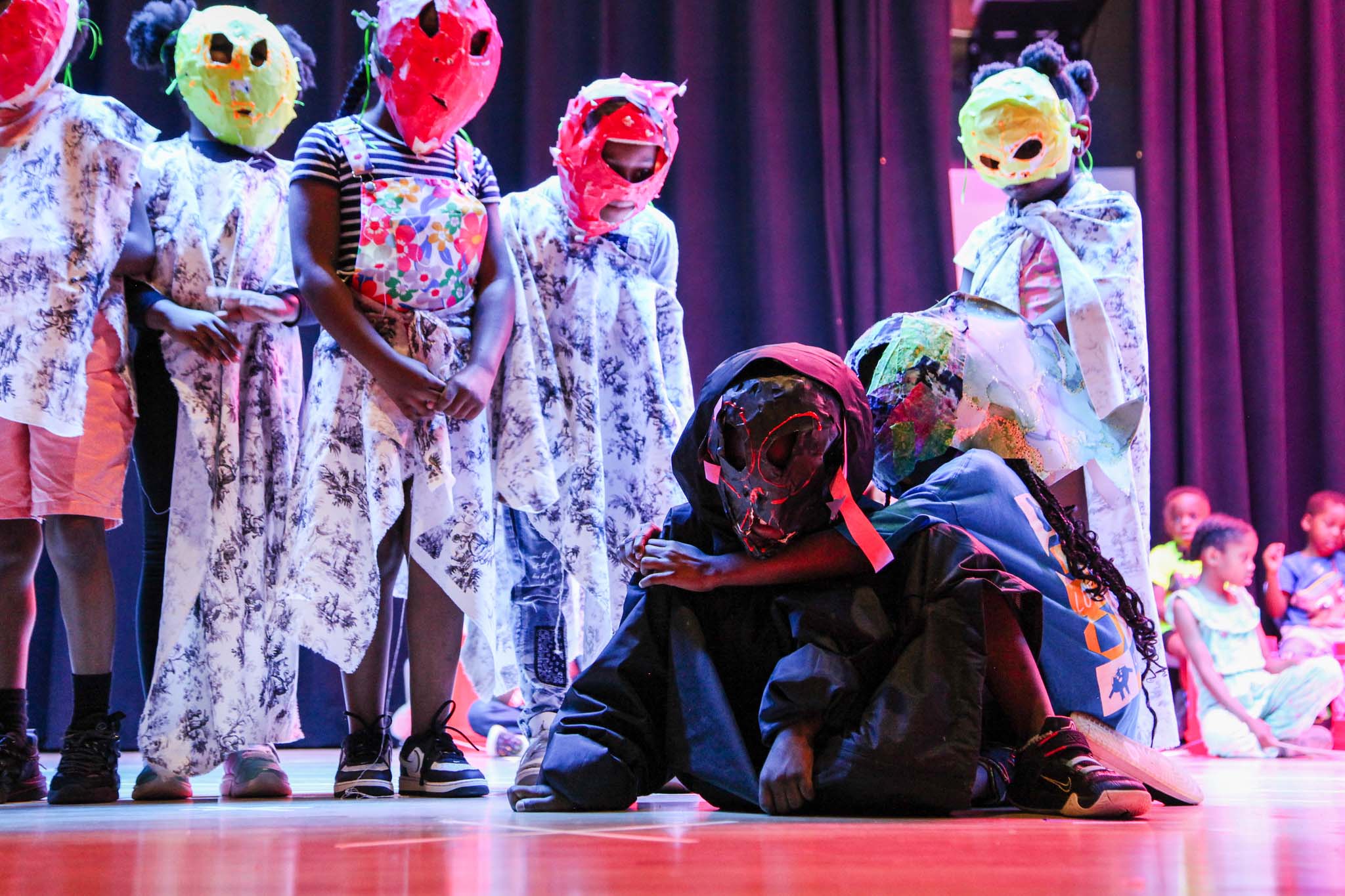
They worked with clay and learned to form pots, and put on musical productions complete with costumes, actors, and musicians. Just imagine all the new ideas and excitement they are bringing with them into the new school year! Take a closer look and hear what teachers and students have to say about SALA in this WMAR-2 news segment!
Summer Arts for Learning Academy, Washington, DC
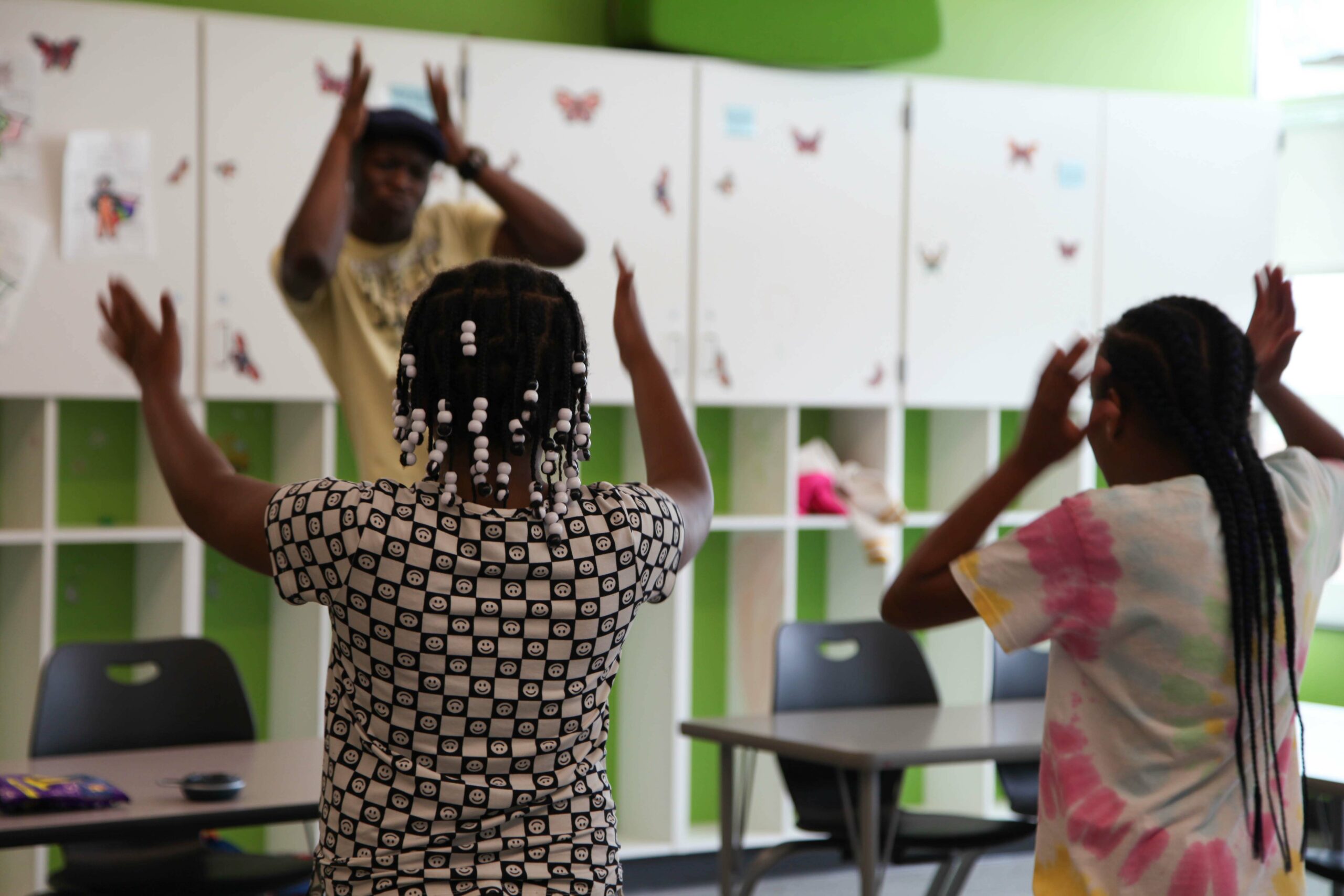
This year, Summer Arts for Learning Academy (SALA), our award-winning out-of-school time program for Baltimore City Public School students, expanded to Washington DC! The program served more than 400 students at two sites with arts-integrated, engaging learning experiences! Read our blog post on the expansion.
Summer Arts for Learning Academy at Goodnow

65 students in grades K-8 from Baltimore City Public Schools attended Summer Arts for Learning at Goodnow. The five-week arts enrichment program was held at East Baltimore’s Goodnow Community Center and is managed by Arts for Learning Maryland. They spent the summer engrossed in enriching activities like visiting museums, they made a TON of art, and they were even welcomed at the Ravens training camp!
Bloomberg Arts Internship

35 rising high school seniors gained hands-on, transformational experience working with arts and cultural institutions in Baltimore City while also receiving guidance and mentorship in their college application journeys during the Bloomberg Arts Internship. At the program’s culmination, interns presented portfolios outlining their experiences and spoke about all they learned and the tasks they accomplished at their worksites for seven weeks over the summer.
While this closed out the internship for some students, others will continue their internships through April! These school-year interns will continue receiving support in general and with their college applications while working 5-8 hours per week at their worksites. How awesome is that?
Summer Arts for Learning Academy Expands to DC
SALA has expanded!
Starting this summer, more than 400 students in DC Public Schools are having the Summer Arts for Learning Academy (SALA) experience. The free, five-week program in partnership with the DC Public Schools System brings arts-integrated learning and creative exploration to students in ways that support their growth in math and literacy! In these arts-integrated classrooms, teachers and teaching artists partner to connect non-arts subjects with a particular art form, challenging students to express themselves and problem-solve in new and creative ways. Additionally, students work with professional artists and community leaders to design and paint a mural. SALA DC is running at two sites in DC this summer: Lawrence E. Boone Elementary School and Bruce-Monroe Elementary School.
In preparation for working with students in DC, Arts for Learning Maryland and DCPS identified the highest areas for impact. Over the course of a year of planning, A4L met with dozens of community leaders, artists, and educators in DC. The collaborative planning resulted in SALA DC employing more than 60% of its artists and staff who are based in DC or work for DC Public Schools.
Research shows that this award-winning program helps stem summer learning loss and stimulates student growth in the subsequent school year. SALA has been transforming summer learning for thousands of Baltimore City Public School students for more than eight years–supporting both their academic and their social & emotional growth. And now, students in SALA DC will also learn by doing, by creating, and by exploring through classroom instruction co-developed and co-led by teachers and professional teaching artists.
To learn more about SALA, visit artsforlearningmd.org/programs/summer-arts-academy.
Arts for Learning Maryland Is Now an Approved Community Schools Vendor for Baltimore County Public Schools
Arts for Learning Maryland announced a new partnership with Baltimore County Public Schools (BCPS) to enhance the out-of-school time learning and arts experiences for thousands of students. Arts for Learning Maryland is now an approved vendor for BCPS’ 37 community schools and can provide engaging, inspiring, and impactful arts experiences as required of community schools by the district for Arts and World Cultures Out of School-Time programs.
Community schools in Baltimore County can now book Arts for Learning Maryland assemblies, residencies, workshops, and performances for before- and after-school, on weekends, and over the summer.
Arts for Learning’s programs reinforce Community Schools’ approach to learning by emphasizing connection. Schools connect their communities to neighborhoods, homes, families, and partners. Similarly, Arts for Learning’s programs–from artist-led workshops on painting or photography and assembly dance performances to in-depth sessions that explore music or poetry–bring us together, spark curiosity, and foster enthusiastic learning and discovery.
Community Schools interested in booking programs with Arts for Learning Maryland can contact Sean FitzPatrick at [email protected]. To learn more about Arts for Learning Maryland’s programs, click here.
Resilience
Statistics, English literature, ethics, chemistry, psychology, art history, dance, foreign language, chemistry, graphic design… the combination of coursework for students in their final year of high school runs the gamut. For some of last summer’s Bloomberg Arts Interns, it’s all that and an internship on top. A dozen students elected to continue their 2022 summer internships into the school year, getting a full year’s worth of experience working closely with an arts and cultural organization.
These school-year interns got more time to cultivate relationships, experience a greater variety of jobs, had more opportunities to grow and contribute to their worksite communities, and worked with supervisors to design capstone projects that would be both meaningful to their growth as well as to their organizations. Their projects took many forms ranging from filming and editing videos to jewelry fabrication and design. Some interns planned events while others planned classroom lessons.
Here is a peek into what interns did at their worksites:
- At the Baltimore Museum of Art, intern Adelyn Pierce made a website for the BMA’s Staff Art Show, A Work of Art. She also organized the submissions and helped install the exhibition.
- Ariel Gilliam worked at the Baltimore Jewelry Center while creating her own handmade jewelry line.
- Francine Tagaytay and Molly Brown worked at Blue Light Junction. There, Francine made a free-form crochet piece from yarn that she dyed with natural pigments: indigo and logwood.
- At Baltimore Rock Opera Society, Jem Mukherjee and Sean Cooper II created Baltimore Rock Opera Society’s Video Vault: an online archive/subscription service of show recordings going back a decade.
- Jewel Oliver worked at Art with a Heart where she created products for the organization’s online HeARTwares Shop. She also created lesson plans to go along with each of the products.
- Jordan Thomas worked at Baltimore Clayworks.
- At Living Classroom’s Ascend Through Music program, Kaylee Eaton-Torres created the Sharpest Artists Program. She coordinated and planned meetings, created agendas, facilitated events, designed fliers, promoted the program, and partnered musicians with artists who designed and created album covers for their music. She also developed a “youth vendor” system–a platform for youth to market their own products or services. Imeah Curbean interviewed artists related to the Ascend through Music program and highlighted their work in a series of videos while also working to enhance the programming that was already happening.
- Ke’Ara Page worked as a teaching assistant at Single Carrot Theatre‘s after-school programs for third through fifth graders.
- At Central Baltimore Partnership, Summer Hubbard created a zine that served as a guide for the murals of Station North and a coloring book! She also created promotional art for YouthWorks.
Highlights and artifacts from the interns’ capstone projects were presented at Arts for Learning’s home on North Avenue in an interactive display called Resilience. As family, friends, worksite supervisors, and even future Bloomberg Arts interns visited each exhibit, school-year interns were there to explain the work that went into their projects and share the excitement of making lasting and significant contributions within their organizations.
Ty’ Candice Smith, a 2020 graduate of the Bloomberg Arts Internship, turned the school-year interns’ collective artist statement into poetry.
Wise words can come from anywhere
But from BAI interns during the 2022-2023 school year
Come on now I know you’re honored to hear
We expected many different things
That involved time management, college application help,
anxiousness, no fun, and procrastination
but I won’t say names
There was lots to love though
Like the freedom and creativity we were allowed to have
Making new interactions which will bring long-term connections
Embracing authenticity and being welcomed with gentleness
Clear communication and high vibrations
Good vibes and stepping into great music
I’m not sure if BAI could ever be useless
Truth is we got more connected to our city, self, and each other
From networking to doing the bird flu
Community work which was very influential
Visiting the art organizations in the city
Gaining more friends and family
While being in our own world #WELITTY
People should focus more on the positivity in our city
So when people look at us they won’t feel so much distaste or pity
We explore opportunities like the BAI program so we won’t fall
short of who we are destined to be
Now just like that you’ve had a sneak peek on what it was like to
be a part of an amazing team!
The projects these school-year interns dreamed and planned with their worksite supervisors were brought to life through diligence, patience, and fearless imagination. What an honor it is to experience the fruits of these partnerships and how exciting it will be to see how the seeds these school-year interns have planted will grow.
View photos from Resilience on Flickr. Learn more about the Bloomberg Arts Internship at artsforlearningmd.org/bloomberg-arts-internship.
Talbot County fourth and fifth graders-turned-screen-painters thrive with teaching artist John Iampieri
Maryland flags…Black-eyed Susans… blue herons… University of Maryland Terrapin basketballs, and more!
In late March at White Marsh Elementary in Talbot County, dozens of students set off on a creative journey with screen painter and Arts for Learning Maryland teaching artist John Iampieri. In a one-week residency, students designed and painted their own screens of Maryland state symbols–bringing their learning about the state in the classroom to life through the arts!
The Star Democrat was on hand to cover the experience! Read their coverage (and see photos!) here.
In the residency, students sketched their designs and then blew paint through a straw onto their screens to make their vision a reality. The hands-on, engaging residency was a perfect example of how creativity transforms learning. But don’t take it from us–hear what White Marsh Elementary School Principal Kimberly Seidel said:
“I personally believe that arts are very, very important. I have a passion for students being involved in art and arts residencies. It gives the students an opportunity to work on persevering for tasks and not necessarily getting everything right. Art doesn’t have to look the same. So there are many ways to approach art. A student who may not be successful reading, might be able to go in there and produce the visual. They could draw the beginning, the middle, and the end of a story so they are feeling some sort of success. There is a lot you could do with history, mathematical concepts, symmetry, and multiplication. There are so many connections to art. Our fourth and fifth-grade students have really enjoyed this screen painting.”
We couldn’t have said it better! To learn more about John Iampieri’s work, click here.
Arts for Learning Maryland Receives $1.7 Million Grant to Expand Early Childhood Programming
Saul Zaentz Charitable Foundation funding will support evidence for arts integration
Arts for Learning Maryland (A4L) announced today that it has received a three-year, $1.7 million grant from the Saul Zaentz Charitable Foundation to significantly expand its arts-integrated early childhood programming for children ages 0-6, educators and families, and caregivers.
Through the grant, Arts for Learning Maryland (formerly Young Audiences of Maryland) will advance the field of early childhood education by providing high-quality opportunities to learn in and through the arts in classroom residencies, professional development educator workshops, and family events. As a result, Arts for Learning will reach over 84,000 young children (a 380% increase over its current reach) and 23,000 teachers and caregivers over the next three years through its joyful, arts-integrated programs, supporting school readiness in early learners and strengthening educator and caregiver practice. Arts for Learning will double the number of Maryland counties in which it delivers these programs–from seven to fourteen–providing historically disinvested communities with critical access to its programs.
The Saul Zaentz Foundation grant is the largest private grant in Arts for Learning Maryland’s history and the third grant made to the organization by the Foundation.
“Through its investments in Maryland, the Saul Zaentz Charitable Foundation seeks to support the arts community, create opportunities for historically disinvested populations, and advance programs for early childhood education and the families of young children. Arts for Learning Maryland’s programming for the young child checks all the boxes,” said Marvin J. Garbis, Director of the Foundation. “We are very proud of its innovative work with artists and young children throughout the area, and we join it in celebrating Month of the Young Child in Maryland.”
The grant comes at the right time for Maryland: early childhood education is identified as one of the four top priorities in the Blueprint for Maryland’s Future passed by the Maryland General Assembly in 2021. With recent studies showing Maryland kindergarten readiness on the decline, with just 40% of children demonstrating readiness in 2021-2022, the need is clear. The new Arts for Learning Maryland initiatives will prioritize areas that have the lowest school readiness scores.
Arts for Learning Maryland’s work supported by the Foundation grant will:
- Strengthen the skills and knowledge of Maryland’s early learning educators and care providers through expanded professional development experiences. Arts for Learning will provide educators with best-practice-based arts strategies that support early childhood development through workshops, a new Early Learning Professional Development Center with a robust schedule of artful learning opportunities, and the creation of a Childcare Provider Fellowship program of in-depth study and mentor collaborations.
- Deliver more programs for children and their parents that incorporate arts-integrated exploratory play, thus encouraging parents to better understand and meet the social, emotional, and academic needs of their children.
Baby ArtsPlay!™, A4L’s embedded professional development artist-in-residency program, will expand to more counties in Maryland. Arts for Learning will engage 1,600 parents and caregivers a year by 2025. In addition, the organization’s Early Learning Video Portal, an online resource of pre-recorded arts activities, will expand with more videos while becoming more easily accessible via a new phone app. Arts for Learning programs will be offered in more Judy Centers and, for the first time, in Head Start programs across Maryland.
- Build evidence that reinforces the value the arts play in early childhood development. Arts for Learning will conduct research on the impact of the arts on early childhood development, adding to studies from the Arts Education Partnership and others that show that the arts play a crucial role in supporting the cognitive, motor, language, and social-emotional growth of young children.
Said Stacie Sanders Evans, Arts for Learning Maryland President & CEO, “This grant from the Saul Zaentz Charitable Foundation affirms the value and success of our art-based approach to development, and enhances our work in providing transformative experiences for early childhood growth and learning. On behalf of the tens of thousands of students and families, and the communities around Maryland that this grant will impact, we’re grateful to the Saul Zaentz Foundation for recognizing our role in expanding these opportunities.”
A4L kicks off today celebrating Month of the Young Child, a collaboration between leading early childhood organizations in the state that elevates the importance of early childhood education and features a wide range of activities for children, childcare providers, and families.
To learn more about Arts for Learning Maryland’s early childhood programs, visit artsforlearningmd.org/programs/early-learning.
Introducing: Month of the Young Child
Join Arts for Learning Maryland in partnership with Maryland Association for the Education of Young Children for Month of the Young Child–a fun-filled month (April 10 – May 5) of arts-integrated workshops, lessons, and activities for ages 3-6.
With interactive, artist-led workshops designed for our youngest learners, participants will explore through dance, movement, and song! Educators, families, and caregivers will build skills and confidence in using arts strategies that support childhood development while students creatively explore topics like language, science, math, and social-emotional learning.
These engaging, impactful experiences are tailored to work for educators AND families, at home or in the classroom!

Access a NEW On-Demand, Virtual Arts Workshop with a different artist every Monday during the event:
- Plant an imaginary seed in Singin’ Sunshine with Alden Phelps
- Empower individual self-expression in Bye Bye Blues with Vesper Osborne
- Learn a traditional Irish Song and Dance in A Céilí: An Irish Music and Dance Party with Marsha Searle
- Have fun learning how to write letters in the ABCs of Rap with Baba Bomani
Weekly Lesson Extensions: Practice skills and engage students in each new art form.
- Revisit and reinforce what students learned in weekly workshops while incorporating arts into your day with carefully crafted lesson plans that integrate learning with music, dance, visual arts, and theatre!
BONUS Friday Meet-and-Greets: End each week of Month of the Young Child by meeting that week’s workshop artist LIVE on Zoom. Ask questions, share and celebrate what you learned, and try something new!
A new, on-demand workshop will be released to stream each Monday and available to rewatch for four weeks after its premiere.
Learn more and register today at artsforlearningmd.org/moyc
Blacktastic Was Fantastic!
What a day! Thank you to everyone for joining us for Blacktastic, the Children’s Festival of Maryland Black History & Culture! For the third year in a row, attendees enjoyed six engaging, arts-infused workshops that celebrated and educated viewers about historic Black Marylanders–and each workshop was supplemented with in-class lessons from an activity book containing hands-on activities to expand on the experience. We reached 43,975 students and 1,746 teachers this year–and with the help of generous sponsors, were able to cover the registration costs for over 12,000 of those students!
We got to see the magic and excitement of Blacktastic first-hand. Teachers and students at Creative City Public Charter School loved spending the day tapping out beats and measures; connecting to poetry, history, and activism; learning the values of musical notes; visiting historical sites around Maryland; and dancing to the music of marching bands and Eubie Blake alike! One teacher rolled up the carpet in his classroom to allow students to tap along with Quynn Johnson while learning about drummer Chick Webb. Across the room, students’ faces reflected joy and concentration as each child challenged themselves to get the steps just right.
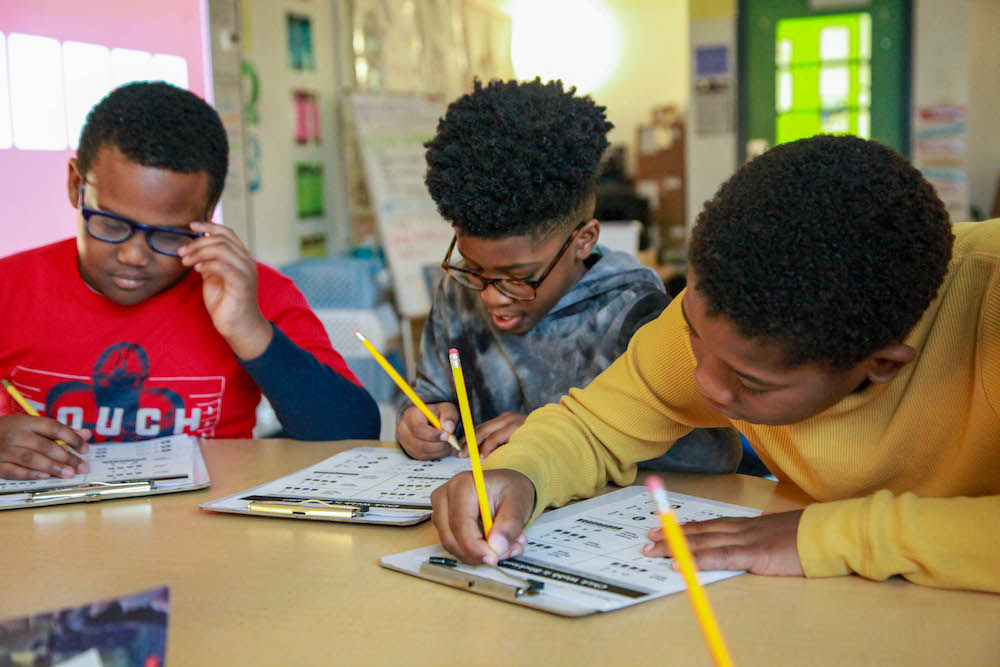
In another class, students huddled together in focused groups. After watching The Roots & Rhythm of Chick Webb, they learned to identify musical notes and the value (time) notes represent as parts of a whole (fractions). Using their knowledge of the value of musical notes, these students were working together to decode and solve math problems!
Peeking into another classroom, we saw young students twirling, swaying, and moving to the music of legendary jazz pianist Eubie Blake. On the screen, artist Renée Georges and her band led the children through song and even toured the Eubie Blake National Jazz Institute and Cultural Center. In the classroom, children were given the space to not only hear a sound from another era, but feel it through their bodies, dancing as the soft light from the projection filtered into the room.

And we can’t forget trivia time! There is nothing like the excitement of Blacktastic Trivia in a classroom. Everyone was bursting with excitement to share what they learned–and indeed, they did learn! Over the three-hour program, students learned that Lillie Carroll Jackson was known as the “Mother of Freedom.” They learned that Matthew Henson was the first person to reach the geographic North Pole; that Chick Webb was prescribed drumming by his doctor; that Mother Mary Lange opened the first school for Black children in Baltimore; that Eubie Blake wrote a Broadway musical called Shuffle Along; and that Lucille Clifton was Maryland’s Poet Laureate. We can only imagine what an awesome journey through history we’ll take next year.
Did you know that the teaching artists who brought this history to life can be brought into your classroom? Learn about our Blacktastic artists and the historical figures we celebrated on our website at artsforlearningmd.org/blacktastic.
Blacktastic: Children’s Festival of Maryland Black History & Culture returns this February
This Black History Month, tens of thousands of Maryland students will celebrate the joy of Black history and culture through the arts at Blacktastic: A Children’s Festival of Maryland Black History & Culture—a day-long, arts-integrated, performance-packed virtual experience produced by the nonprofit Arts for Learning Maryland.
On Thursday, February 23 from 9:00 a.m. to 12:30 p.m., Blacktastic will deliver seven inspiring performances and educational workshops by teaching artists that celebrate renowned Black Marylanders—building pride of place among students in the process.
Led by dancers, storytellers, Hip Hop artists, and marching bands from Morgan State University and Milford Mill Academy, students will find engaging lessons on renowned Black Marylanders such as Chick Webb, Mathew Henson, Lucille Clifton, Lillie Carroll Jackson, Mother Mary Lange, and Eubie Blake. Teaching artists will be presenting from historic sites associated with each Marylander—making Blacktastic a virtual field trip for students.
By infusing traditional learning with artistic expression, Blacktastic transforms traditional learning experiences while reinforcing classroom lessons in english, history, science, and math with curriculum-aligned content.
Last year, more than 30,000 students attended Blacktastic from every county in Maryland. Educators are invited to register today to bring their classes or entire schools to this virtual experience for all ages.
Said Jessica Hebron, Arts for Learning Maryland’s Chief Program Officer, “students will celebrate the joyful, beautiful, inspiring history of Black culture in Maryland by learning the stories of Marylanders who have broken barriers, made change, and inspired millions!”
Registration for Blacktastic includes a digital activity book that reinforces what students learned during the festival through hands-on experiences. A variety of affordable pricing options are available to individual classrooms or entire schools. And all registrants will have access to the festival recording through June.
To learn more about Blacktastic, visit artsforlearningmd.org/blacktastic.
Meet a few Early Learning Teaching Artists!
Dance… puppetry… music… theater… no matter the art form, our early learning teaching artists are absolutely incredible–bringing their creativity to the education and development of our youngest learners!
In the process, they’re finding inspiration to support their own work and building skills and perspectives that change them for the better. But don’t take our word for it, meet a few of our early learning teaching artists–tap dancer Quynn Johnson, musician Lisa Mathews, and dancer Laura Schandelmeier–and hear their thoughts on the role, below! Learn more about our Early Learning programs, on our website.
Interested in becoming an early learning teaching artist? We’re recruiting now until February 3! Learn more at artsforlearningmd.org/programs/early-learning/become-an-early-learning-artist.


Student Artwork on Display at the BMA: Visual Metaphors of the COVID-19 Pandemic
What do you imagine it would be like to be a child in a global pandemic? Would your memories be linear, or would they come to you in no particular order? Would they be made of things you saw with your eyes, or things you felt in your chest? What are the images that would stay with you?
Children were asked to imagine how they would explain what it’s like to grow up in a pandemic when they met artist Katherine Dilworth for the first time in their elementary school art rooms this year. The fiber artist worked with students in two Maryland elementary schools–Bannockburn Elementary in Montgomery County and Bryant Woods Elementary in Howard County–over a series of weeks as part of an Arts for Learning residency to design and create quilts composed of visual metaphors reflecting on life during the COVID-19 pandemic.
Sections from the quilts reflecting on life during the COVID-19 pandemic will be on display at the Baltimore Museum of Art on December 4 from 1-5 pm as part of their Community Day Celebration.
In this video, artist Katherine Dilworth explains the process of working with elementary school students on the creation of a needle-felted pandemic quilt.
Dilworth taught the students how to illustrate their ideas onto squares using a technique called needle felting. With tufts of dyed sheep wool and barred needles in hand, students reflected on and recreated their fresh memories and ongoing realities. They built up layers of fiber to illustrate hopefulness and isolation, new ways of communicating and connecting, sadness, fearfulness, and quiet. Some of the metaphors that emerged were of starry nights and the vast universe, there was a caged chicken, a dove delivering a vaccine-filled syringe to the world, and a rainbow spectrum of virus molecules. Once their individual metaphors were complete, teachers, parents, and even grandparents came together to assemble the students’ work into giant quilts.
And now the greater community has the chance to experience the artwork that resulted from these residencies. Sections from the quilts reflecting on life during the COVID-19 pandemic will be on display at the Baltimore Museum of Art on December 4 from 1-5 pm as part of their Community Day Celebration. In addition, Katherine Dilworth will be leading needle-felting workshops at the museum for the general public on that day.
Learn about the event at the BMA on their website.














